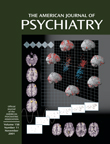The enjoyment and frustration of this book start from the very beginning. As a lay book, it is fascinating. As a book for the scientific community, it has some problems. Adonis was a beautiful Greek youth who was a source of jealousy between the goddesses Aphrodite and Persephone, a being of incestuous origin whose death came by pathological jealousy. Adonis was more appropriately a character for a Dallas-type soap opera than an individual in crisis because of his search for an ideal male body. He is known for his beauty, a quality greater than the more limited current ideal of pure muscularity.
That having been said, the authors are truly experts in the issue of males and their body image concerns. They are most persuasive with the first half dozen or so case histories. It is apparent, from multiple sources, that men today are more concerned with their body image, their weight, and their shape than they were during the 1950s and the 1960s. This is supported by the increased degree of skin exposure in ads, by the evolution of action toys to more V-shaped mesomorphic bodies, and by measurements of Playgirl centerfolds. The book has 11 chapters with appendixes on calculation of fat-free mass index and diagnostic criteria for body image disorders as well as sources of help and an extremely well-documented set of references.
The major point of chapter 2, “The Rise of the Adonis Complex,” is that fatness and body image issues are not only feminine issues. The visual depiction of males who are or are not taking steroids, the pictures of action toys, and changes in
Playgirl centerfolds speak volumes. Although recent magazine advertisements are more likely to feature male bodies with minimal clothing, the implication that this ideal began around 1960 is problematic in view of the history of male body image as revealed in what we know about Sparta, the Roman Empire, the Renaissance (the statue of David is actually more like Adonis in the book’s concept than Adonis), and, as recently as 1900, Theodore Roosevelt’s promotion of masculine muscular development. Historically, the male ideal revealed a more global view of masculinity than mere muscularity
(1–
5).
Chapter 3 gives a simple test to assess the presence of the Adonis complex. Chapter 4 progresses to the area of muscle dysmorphia, an area almost exclusively mined by these experienced authors. The dangers of anabolic steroids are described in chapter 5, fear of fatness in chapter 6, and other body obsessions such as hair, breasts, and genitals in chapter 7.
Perhaps of greater concern in terms of public health is the “bleeding down” of typical adolescent and young adult male concerns to young boys who no longer have the option of waiting until puberty to deal with their body image. Heterosexuals versus homosexuals are discussed in chapter 10. The idea that “the Adonis Complex may just be more announced in the gay community, not necessarily more pronounced” is not supported by the findings in other studies that gay men are just behind heterosexual women in terms of desire for thinness. Chapter 11 helpfully guides men with the Adonis complex and their loved ones to getting help. The emphasis in the help section is on cognitive behavior therapy and selective serotonin reuptake inhibitors, both validated forms of treatment. Somewhat lacking is a clear definition of what exactly the Adonis complex is, whether an overvalued belief, an obsessive-compulsive disorder, or a kind of delusional state. These authors are probably the most experienced team in the United States in dealing with these disorders. At a minimum their book is enjoyable reading. Enjoy the book with your noncritical eyes and brain, accepting the jazziness of the title as conveying sex appeal more than accuracy. Poor Adonis has been gored again, but his spirit will certainly rise once more.

